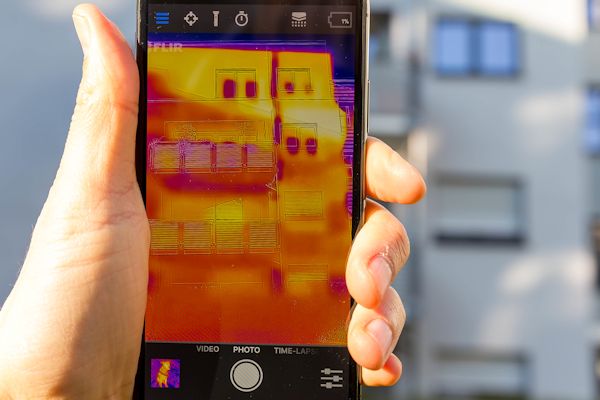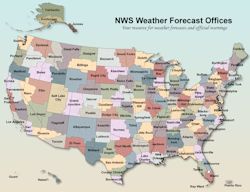SEJournal Online is the digital news magazine of the Society of Environmental Journalists. Learn more about SEJournal Online, including submission, subscription and advertising information.
 |
| Hot weather brings stories of heat-related deaths and public health, drought, wildfire and climate change. But one challenge is finding extreme heat data that is local. Shown above, a heat-mapping device for use with a smartphone camera. Photo: Marco Verch, Flickr Creative Commons. Click to enlarge. |
Reporter’s Toolbox: Finding Record Temps for Summer Heat
By Joseph A. Davis
This summer, you may be writing a story about how record-high temperatures are being regularly blown away. If that’s the case, you will be glad to hear there are many data resources to help you check out that or other temperature-related stories.
The hot weather story has many aspects: heat-related deaths and public health, drought, wildfire and climate change. This toolbox will focus on the numbers that will help you tell the story locally.
 |
| The National Weather Service has a widespread network of local offices, each of which provides searchable online data. Image: National Weather Service. Click to enlarge. |
One challenge: It may feel like there’s more weather data than water in the sea. Although you may never be doing wonky data journalism with it, you will need data. The problem is finding just the right numbers you need while writing up a heat wave.
Often, it’s all about the local temperature. And fortunately, much of the weather data system is organized that way.
Where the data comes from
The National Weather Service, or NWS (part of the National Oceanic and Atmospheric Administration), is deployed over a very widespread network of local offices. Get to know the one(s) for your area. Find a starting point in this map-based listing.
NWS observational data goes down to an even finer level than the structure of local offices. And the NWS makes it available online in a logical and searchable form.
A lot of what the NWS does is forecasting. But
an actual temperature reading is a physical fact …
This is what you want if you are looking
at record-setting temperatures.
A lot of what the NWS does is forecasting. But an actual temperature reading is a physical fact: data. This is what you want if you are looking at record-setting temperatures.
That data is online. But the best way to get this information may be just calling your local NWS office. Another is to use commercial weather services like Weather Channel, Accuweather or Weather Underground.
To talk about a temperature record, you need to identify a place near you where consistent weather measurements have been taken for a long time. That, typically, may be a weather station, like an airport or other fixed facility. This is different than your local NWS office. If you live in a smaller town, it may be a bigger city nearby.
How to find your local data
The NWS system for finding record temps is neither simple nor easy to explain nor consistent from location to location. Here’s an outline of how to go about it, step by step. But be prepared to poke around to look for local records and extremes.
- The first step is to go to the web page for the NWS local forecast office nearest, or of interest, to you. This clickable map works for that purpose.
- Once you get to your local office’s page, look for a tab that says “Climate and Past Weather.”
- Then, hover over that, and you will see an option that says “Local Climate Data and Records” or “local records” or just “local.”
- When you click that, you will get an array of choices that varies by office.
- Seek out the weather station and time period of interest to you. You are looking for a product that may be called “daily extremes,” “normals, means, and extremes,” “normals and extremes” or “weather records.”
Other resources
You can keep track of heat-related news via SEJ’s EJToday top headline service. EJToday is also offered as a free, daily e-mailed digest. SEJ members are subscribed automatically. Non-members may subscribe here.
Joseph A. Davis is a freelance writer/editor in Washington, D.C. who has been writing about the environment since 1976. He writes SEJournal Online's TipSheet and Reporter's Toolbox columns. Davis also directs SEJ's WatchDog Project and writes WatchDog Tipsheet, and compiles SEJ's daily news headlines, EJToday.
* From the weekly news magazine SEJournal Online, Vol. 4, No. 29. Content from each new issue of SEJournal Online is available to the public via the SEJournal Online main page. Subscribe to the e-newsletter here. And see past issues of the SEJournal archived here.

















